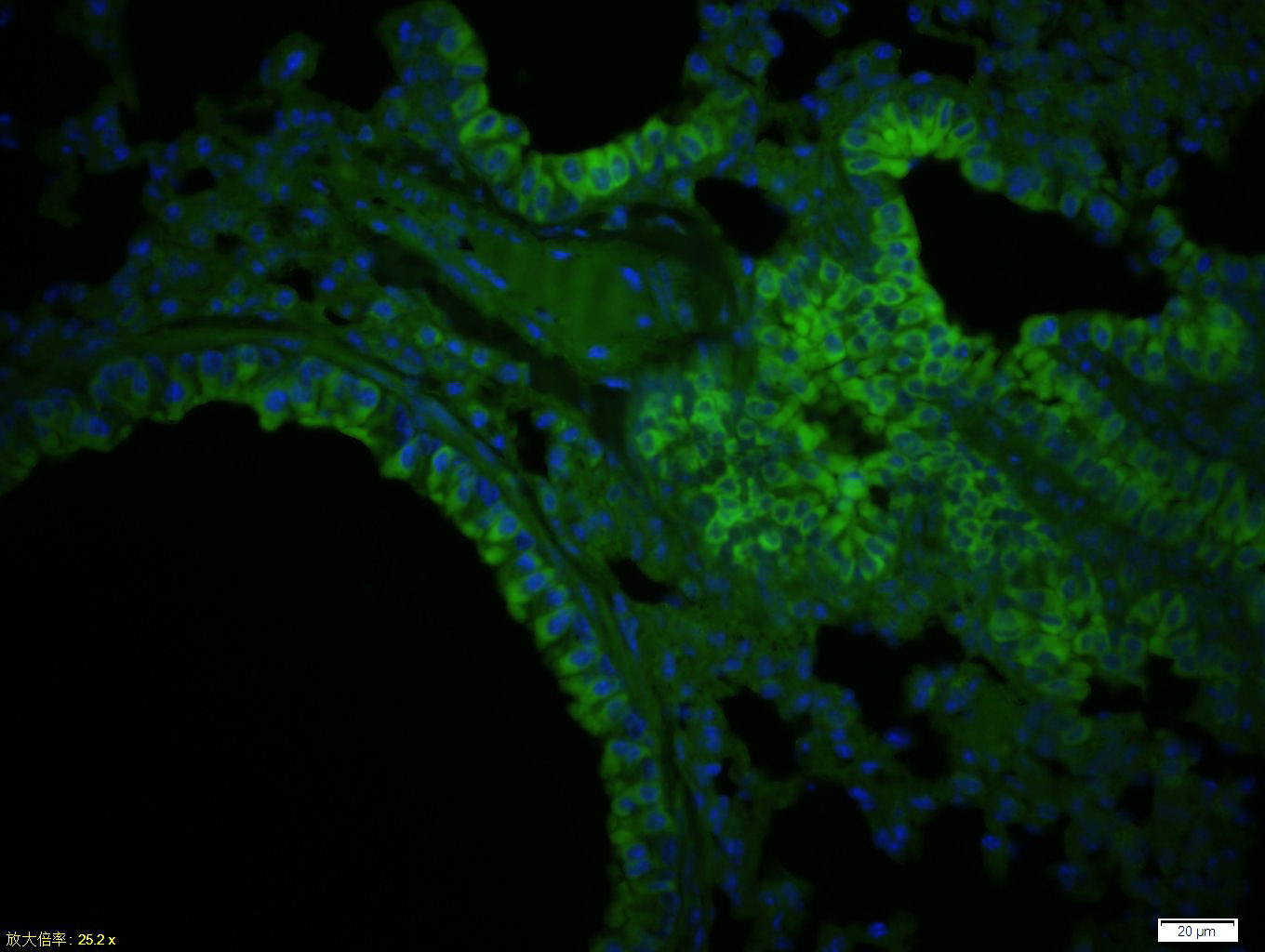
Rabbit Anti-CTRP5 antibody
C1q and tumor necrosis factor related protein 5; C1QTNF5; Complement C1q tumor necrosis factor related protein 5 precursor; LORD; C1QT5_HUMAN.
View History [Clear]
Details
Product Name CTRP5 Chinese Name 补体C1q和Tumour坏死因子相关蛋白5抗体 Alias C1q and tumor necrosis factor related protein 5; C1QTNF5; Complement C1q tumor necrosis factor related protein 5 precursor; LORD; C1QT5_HUMAN. literatures Research Area Cell biology immunology Neurobiology Cell adhesion molecule Immunogen Species Rabbit Clonality Polyclonal React Species Mouse, (predicted: Human, Rat, Dog, Pig, Cow, Rabbit, ) Applications ELISA=1:5000-10000 IHC-P=1:100-500 IHC-F=1:100-500 ICC=1:100-500 IF=1:100-500 (Paraffin sections need antigen repair)
not yet tested in other applications.
optimal dilutions/concentrations should be determined by the end user.Theoretical molecular weight 24kDa Cellular localization Secretory protein Form Liquid Concentration 1mg/ml immunogen KLH conjugated synthetic peptide derived from human CTRP5: 191-243/243 Lsotype IgG Purification affinity purified by Protein A Buffer Solution 0.01M TBS(pH7.4) with 1% BSA, 0.03% Proclin300 and 50% Glycerol. Storage Shipped at 4℃. Store at -20 °C for one year. Avoid repeated freeze/thaw cycles. Attention This product as supplied is intended for research use only, not for use in human, therapeutic or diagnostic applications. PubMed PubMed Product Detail Members of the C1q superfamily have diverse functions that are related to cell adhesion and basement membrane components. CTRP5 (Complement C1q tumor necrosis factor-related protein 5) is a 243 amino acid secreted and membrane-associated protein that contains a collagen-like domain and a C1q domain. CTRP5 is a short-chain collagen that is expressed in retinal pigment epithelium as well as brain, lung, liver and placenta. By forming an extracellular hexagonal lattice, CTRP5 facilitates the adhesion of basal retinal pigment epithelium to Bruch’s membrane, the innermost layer of the choroid. A mutation within the C1q domain of CTRP5 results in abnormal high molecular weight aggregate formation, which alters its structure and interactions. This mutation may result in the presentation of late-onset retinal degeneration (LORD), an autosomal dominant disorder that is characterized by punctate yellow-white deposits in the retinal fundus and night blindness.
Function:
Adipose tissue of an organism plays a major role in regulating physiologic and pathologic processes such as metabolism and immunity by producing and secreting a variety of bioactive molecules termed adipokines. One highly conserved family of adipokines is adiponectin/ACRP30 and its structural and functional paralogs, the C1q/tumor necrosis factor-alpha-related proteins (CTRPs) 1-7. Unlike adiponectin, which is expressed exclusively by differentiated adipocytes, the CTRPs are expressed in a wide variety of tissues. These proteins are thought to act mainly on liver and muscle tissue to control glucose and lipid metabolism. An analysis of the crystal structure of adiponectin revealed a structural and evolutionary link between TNF and C1q-containing proteins, suggesting that these proteins arose from a common ancestral innate immunity gene. CTRP5 has been suggested to be involved in age-related macular degeneration.
Subcellular Location:
Secreted
DISEASE:
Defects in C1QTNF5 are a cause of late-onset retinal degeneration (LORD) [MIM:605670]. LORD is an autosomal dominant disorder characterized by onset in the fifth to sixth decade with night blindness and punctate yellow-white deposits in the retinal fundus, progressing to severe central and peripheral degeneration, with choroidal neovascularization and chorioretinal atrophy.
Similarity:
Contains 1 C1q domain.
Contains 1 collagen-like domain.
SWISS:
Q9BXJ0
Gene ID:
114902
Database links:Entrez Gene: 114902 Human
Entrez Gene: 235312 Mouse
Omim: 605670 Human
SwissProt: Q9BXJ0 Human
SwissProt: Q8K479 Mouse
Unigene: 632102 Human
Product Picture
Bought notes(bought amounts latest0)
No one bought this product
User Comment(Total0User Comment Num)
- No comment



 +86 571 56623320
+86 571 56623320
 +86 18668110335
+86 18668110335

